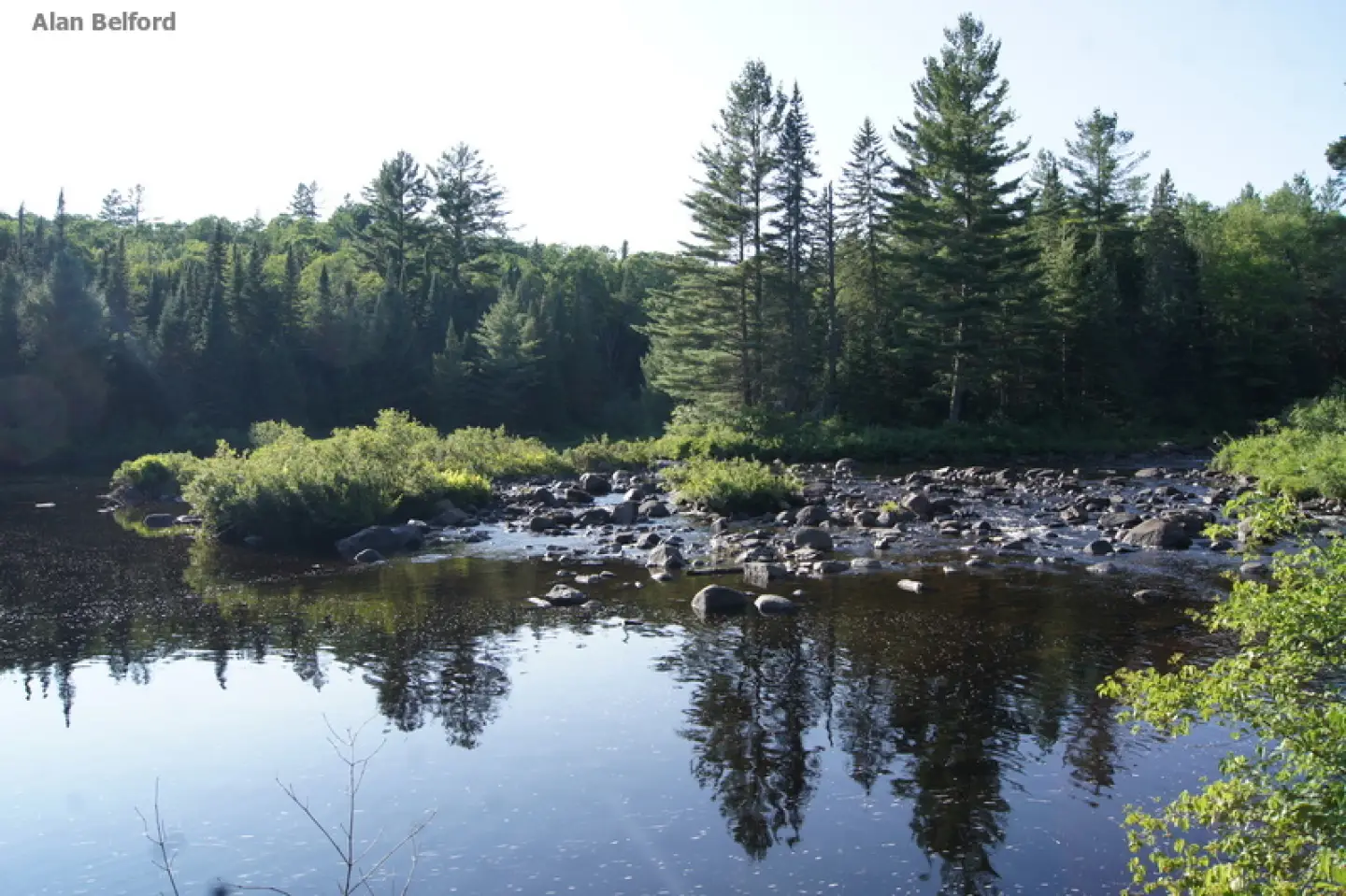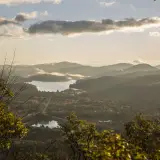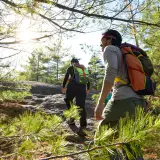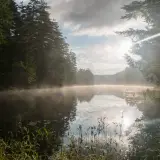A Chance to go Camping
Last week Wren and I took a camping trip down to Vanderwhacker Mountain Wild Forest where we explored a variety of places for birds and anything wild. After a brief stop in Schroon Lake, we drove from town up into the wild forest where we briefly explored some areas along Northwoods Club Road before stopping at the southern trailhead along Route 28N for Hewitt Eddy.
Hiking to Hewitt Eddy
From the southern trailhead it is just under a mile to the Eddy itself and Wren and I made quick progress in the late afternoon through a beautiful mixed forest on the snaking pathway, brushing bracken ferns as we went. While the warm afternoon was largely quiet, we still heard and saw quite a few birds including Magnolia and Black-throated Blue Warblers, as well as Hermit Thrush, White-throated Sparrow and Blue-headed and Red-eyed Vireos. We eventually made our way to the water where the Boreas River cuts along the northern access trail. There we found the wide, slowly turning Eddy of the otherwise rocky and bubbling stream and Wren plunged in to cool herself off.
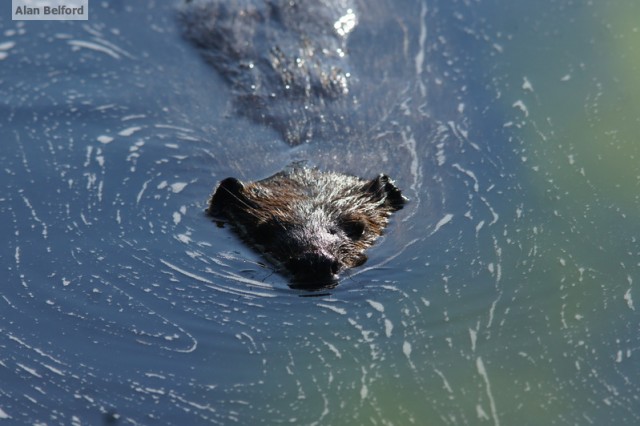
Her splashing may have aroused the interest of the local beaver which suddenly appeared and slid quietly over towards where she stood on shore. Then with a mighty thump, it splashed its tail and dove in an effort to chase us away. It was soon back, lurking near where Wren had jumped into the water, and remaining much closer than I usually see beavers do when we are out hiking. I tried to take advantage of this by snapping photos of it while attempting to keep Wren away from spooking or agitating it. After a few minutes of this we left to explore part of the northern arm of the trail along the Boreas River before retracing our steps to the southern trailhead. For folks with two cars, they can hike the short two mile trail straight through.
Birding Along the Roosevelt Truck Trail
The day was cooling to evening by this point but there was still time to explore along the Roosevelt Truck Trail, so we drove a short distance north on Route 28N to the somewhat hidden trailhead which marks the southern access to the trail. We hiked the grassy road perhaps a mile each direction, I was listening to the quiet woods while Wren was busy sniffing the ground. In a low, thicket of balsam fir, a family of White-throated Sparrows began to scold us – I could see that a few of the birds were recently fledged young which were looking rather ungainly and awkward as their feathers grew in an unbecoming manner and pushed out their natal down. Young birds always look funny at that stage.
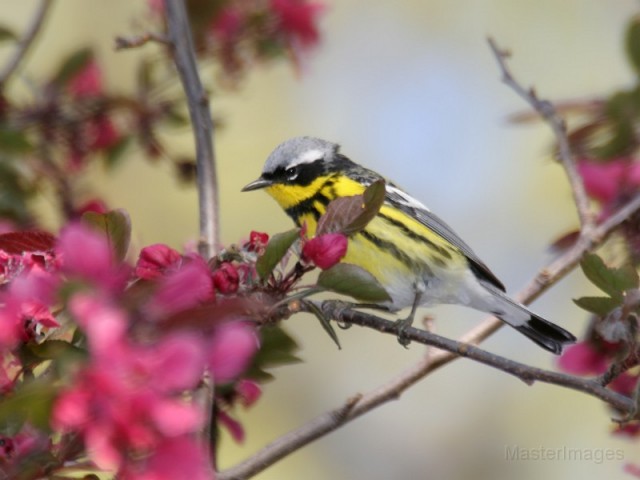
I decided to encourage their scolding by calling for a Barred Owl and the sparrows responded by doubling their chirps. Soon other birds were responding too, as the forest formed a posse to chase the unseen owl away. American Robins, Swainson’s and Hermit Thrushes, Hairy Woodpeckers, Yellow-bellied Sapsuckers, Golden-crowned Kinglets, Black-capped Chickadees, an Ovenbird, Red-breasted Nuthatch, Magnolia Warbler, and both Blue-headed and Red-eyed Vireos flitted this way and that and scolded me from the trees. After a few minutes and having satisfactorily disturbed the neighborhood for long enough, I stopped calling and watched as the birds quietly slipped back to hidden perches, presumably content that the owl was gone for now. We turned and walked back to the car.
Finally Getting to Camp
Our final stop of the day was to find a campsite on Moose Pond Way, back south along Route 28N and directly adjacent to the bridge over the Boreas River. We made slow progress on the rough and rocky road, but we finally found a few open campsites, chose one, and I pitched the tent while Wren explored our environs. White-throated Sparrows, Red-eyed Vireos, and an Ovenbird called and sang from the growing shadows, but the evening choir was dominated by Swainson’s Thrushes and Hermit Thrushes whose ethereal songs are the perfect backdrop to any Adirondack camping experience. I fed Wren, and cooked in the twilight, listening to them until they finally became quiet with the night. I cleaned up our things, and Wren and I crawled into the tent early, as we generally do when camping.
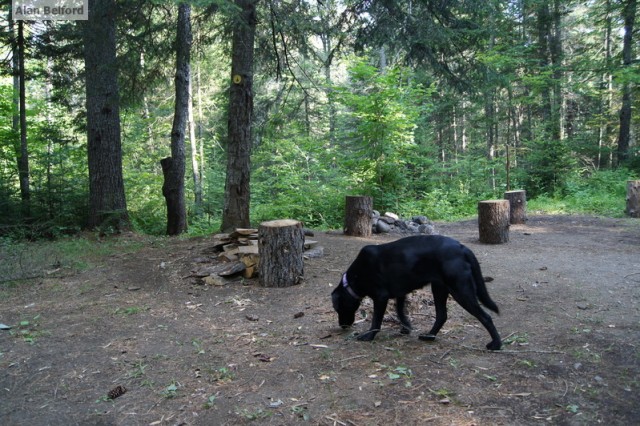
It was a beautiful night for camping as temperatures cooled in the darkness. Wren lay with her face pointed towards the door in order to keep watch, with me lying beside her, sleeping, but listening to hear the sounds of the night around us. At one point – and I don’t know at what time - a Barred Owl called. I lay listening to it before turning and falling back to sleep. The following morning arrived, much as the prior day had ended – with the songs of Hermit and Swainson’s Thrushes leading a chorus of birds as our natural alarm clock. I listened to them before finally getting up, and as I moved around camp on the chores of breakfast and breaking down the tent, we were treated by both a flyover of a Red Crossbill and a short visit from a Boreal Chickadee. It was going to be a great day to be in the woods.
It's a great time to plan a camping trip to the Schroon Lake Region. Check out our camping, dining, and outdoor recreation pages for more information!
